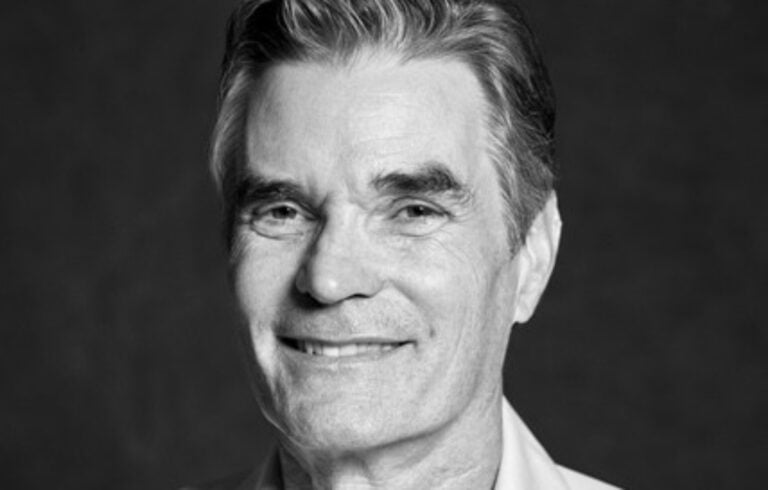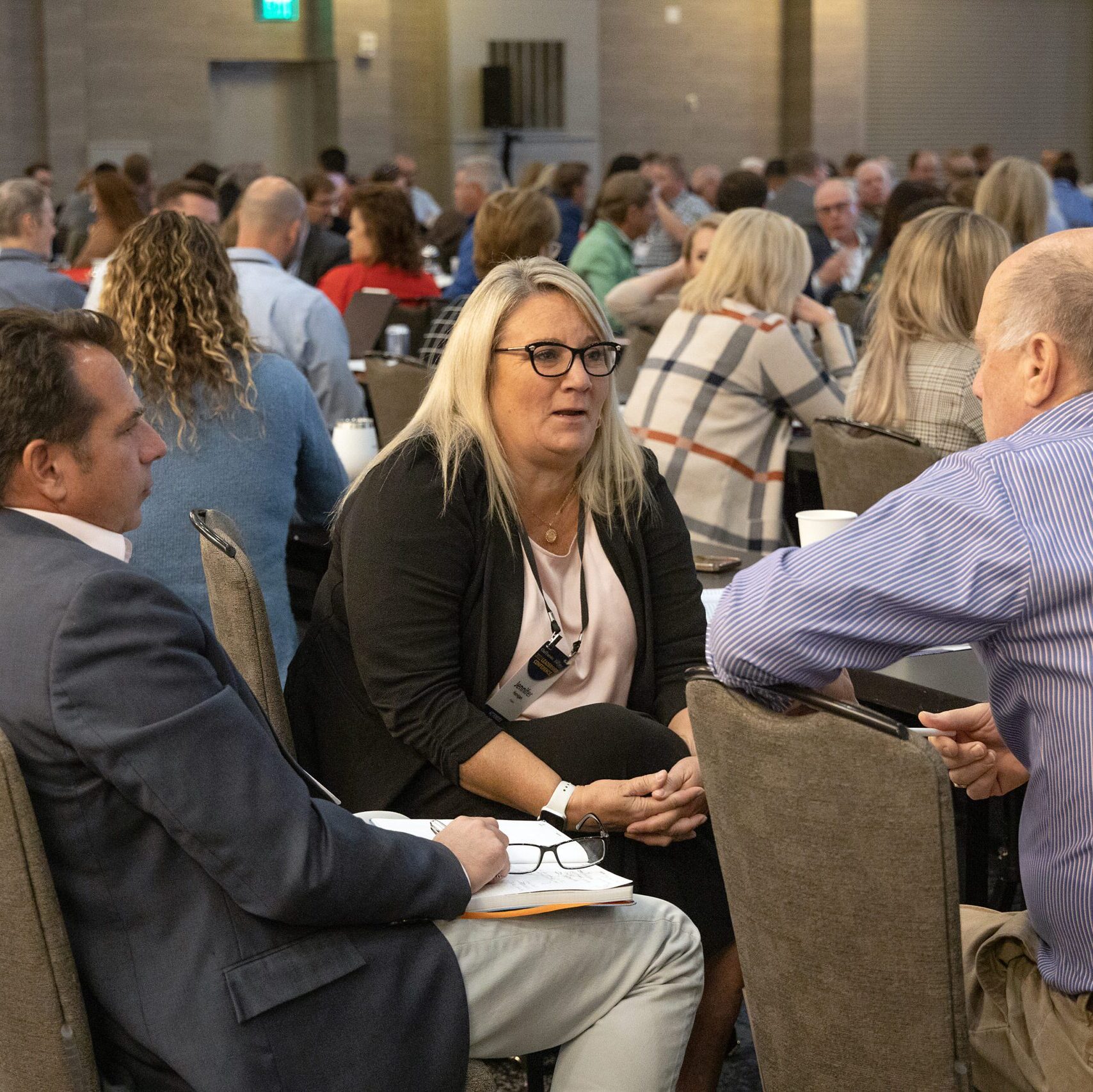


Editor’s Note: There are plenty of business leaders with eclectic resumes, but few (none?) I’ve ever encountered that match the CV of Lionel Benizri, CEO of Yood.co. Based in Chicago, he’s an ordained rabbi, a biblical scribe, a mohel (who performed the circumcision of his own sons), an Ironman athlete and a 3x SaaS CEO with four ventures under his belt—including one bootstrapped to a strategic merger with Deloitte. He now runs Yood.co, a late-stage accelerator that helps SaaS founders and PE-backed CEOs unlock millions in profitable growth—without raising or hiring.
But what really grabbed my attention was Benizri’s other career. As a commando in the Israeli Defense Forces and officer in the Israel Security Agency—two of the most daring and successful combat units in the world—he led more than 120 special operations across Gaza, Lebanon, the Middle East and beyond.
Naturally, I had to ask: How did that work shape his approach to business?
Rather than just spout a few anecdotes, he took the question as an assignment, put keyboard to digital paper, and returned a few months later with a mini-book full of takeaways gleaned by leading through impossible combat situations. The result is blunt, candid, harrowing, deeply insightful and I’m very grateful he decided to share it with us. I hope you find it as fascinating and useful as I did. – Dan Bigman

Life is chaos, no matter how well you prepare.
That morning, we were in Al Bureij—Gaza’s dense central neighborhood, infamous for its underground warfare and factories of terror. A place I had fought in years ago. A place that still reeked of old blood and bad memories.
Twenty-four hours before, we had uncovered the largest missile factory in Gaza. Not just weapons stockpiles, but industrial machinery, 3D printers, explosive compounds and long-range rocket tubes stacked like firewood. An entire terror ecosystem hidden beneath a residential zone.
The discovery was historic. And dangerous. Our new mission was double:
The terrain made this a nightmare.
In front of us: rows of dark alleys lined with booby traps, snipers and hidden lookouts. Behind us: a massive explosive zone now wired to detonate in sequence, being prepared by one of our demolition teams.
We executed with precision. My team moved forward while the demolition squad stayed 250 meters behind, setting up charges. All communication was tight. No margin for error.
Then the unimaginable happened.
A tank, assigned to protect our forward progression, spotted a potential threat emerging from a house up ahead. The crew double-checked—no sign of friendlies. They fired.
But that one shot passed through the electromagnetic field near the demolition zone. It triggered a premature detonation of the entire setup.
The blast was cataclysmic.
Six of our men died instantly. The rest of us were left trying to identify remains, praying that maybe one or two had survived. The grief hit like a wave—but there was no time. Up front, we still had a mission.
Ironically, the same tank fire that caused the disaster had simultaneously protected our forward unit and allowed us to finish the northern sweep.
Two truths held at once:
That night, I didn’t sleep. I sat under the rubble and asked myself a question I’ve faced before—not just as a commander, but as a CEO: When everything collapses around you—what can you still control?
Because in both war and business, plans fail. Systems break. People make wrong calls even with the best of intentions.
You won’t always predict the problem. But you must always be ready for what happens next.
The lesson: Don’t obsess over controlling everything. It’s a trap. Instead:
At Yood and previously CHD, this looks like:
What matters most isn’t prediction. It’s readiness.
We don’t control the chaos—but we do control what meets it.

The Shifa operation wasn’t just another mission.
It was the mission the world was watching.
International journalists had been circling it for weeks. NGOs had already declared the hospital sacrosanct. But our intel was unequivocal: Beneath the surface of this humanitarian symbol lay Hamas infrastructure. Deep, organized, deadly.
For over 21 days, 60 of our elite commandos prepared for the operation. We studied every hallway, every substructure, every possible escape route. This wasn’t a mission we could afford to get wrong—morally, tactically or politically.
At 3:00 AM, we launched.
And right from the beginning—things didn’t go as expected.
Intel came in: One of our task forces had been spotted. Gunfire erupted. Four of our soldiers were hit.
Immediately, we shifted to plan B and began a full sweep. Room by room. Wing by wing. The place felt vast, layered, deceptive.
And… we found very little. Some AKs. Minor weapons. No major proof.
The media pounced. “Nothing found.” “Another failure.” “Overreach.”
But we stayed.
We didn’t stay out of pride or stubbornness. We stayed because we knew from experience: truth doesn’t always reveal itself in the first act.
Over the next four days, we swept deeper into the compound. Into the underground levels. Through false walls. Behind makeshift surgical setups.
And what we found rewrote the entire story:
We didn’t broadcast it. We documented, secured, verified. But we had proven the truth to ourselves. And in war, that’s often what matters most.
Now step back and apply this to business.
I’ve been in that seat, too—as a founder, CEO and operator.
You pour months into a product. It launches—and the market is silent.
Or worse, critics call it irrelevant. Your investors are spooked. Your team doubts the strategy.
Most fold. Some pivot too early. Others look for louder answers.
But leaders? The ones who make it? They hold. They stay focused. They review the data. They double down on the right signals and ignore the noise.
At CHD, after months of reorganizing a fractured sales org, our early results post-launch were flat. Easy to panic. But we trusted the plan. We dug deeper into the accounts. And in week five—not week one—the numbers jumped. We landed the inflection point after the headlines.
This doesn’t mean blind persistence. It means disciplined, eyes-open persistence.
When the world calls your move a failure—can you stay long enough to prove otherwise?
That’s the question Shifa asked me. And the one every founder or executive faces when they hit resistance.
The lesson:
Some breakthroughs come only after the fourth day.
Stay the course. Trust the preparation. The world may forget the noise. But they will remember the outcome.

We entered the seven-story building late in the afternoon.
The coastline wasn’t far—we could hear waves crashing in the distance—but the mood inside was suffocating. We knew this place had served as a strategic Hamas headquarters, coordinating attacks on civilians just weeks prior.
After securing the lower levels, we quickly positioned ourselves on the fifth and sixth floors. The fifth was empty and cold, with signs of forced occupation. I stayed there to help plan our next move.
A few hours later, I climbed to the sixth floor to check on the other team and try to get some rest.
What I found on that floor stopped me in my tracks. Graffiti on the wall: “Startup Mindset.” Old whiteboards filled with diagrams. Words half-erased but still readable: “MVP.” “Customer Segments.” “Pitch Deck.” “Product Iteration.”
This had once been a startup incubator.
I scanned the room. Desks still there. A cracked MacBook. Post-it notes are still stuck to a glass panel. A chair knocked over.
And I could suddenly picture them—the young founders. Late-night debates over UI. Bottles of energy drinks. Mock pitches to angel investors on Zoom. A buzz of ambition.
This floor was once alive with builders.
And then, something darker took over. The same walls now bore Hamas maps and orders. The space that once created tools for life had been turned into a base for terror and death.
Same space. Opposite purpose.
That contrast hit me hard.
That night, I couldn’t stop thinking about how physical environments often reflect the energy poured into them.
It made me reflect on business, too.
How often do we blame external factors—offices, countries, markets—when things fail? But what if those environments are mirrors, not causes?
I’ve seen businesses stagnate in world-class campuses. And I’ve seen global brands born in tiny apartments with no AC. I’ve led turnarounds in sterile cubicles and I’ve seen magic happen in crowded Zoom rooms.
The difference isn’t the space. It’s the intention.
The lesson:
There are no inherently “good” or “bad” environments. There are only the values, energy and commitment we bring into them.
A garage can be the birthplace of Apple—or a lab for destruction. A boardroom can serve growth—or greed.
As CEOs, we don’t just occupy spaces. We shape what they mean. We define whether a culture builds, or corrodes.
Because space doesn’t define us. We define the space.

Shejayia, one of Gaza’s most volatile neighborhoods. Five buildings in front of us. Each one a potential trap. Or a hiding place.
We had to clear them all—but no room for mistakes.
I asked the team:
Later that afternoon, the light started fading. Visibility dropped. We spotted three figures moving in the distance. No clear markings. No obvious gear.
Then, in my earpiece: “Big fire in the building, 12 o’clock, south side.”
Zeev, our lead marksman, raised his rifle. “They’re gonna fire. Let’s go.”
My gut screamed no.
“Zeev, don’t shoot. Give me 20 seconds.”
That moment brought me back to 2000. My first months in Duvdevan. We lost three commandos in a friendly fire incident. Wrong call, made fast. Since then, our unit instilled a brutal discipline: verify—then shoot. No exceptions.
Back to 2023. I radioed two nearby units to confirm their positions. Within seconds: confirmation. Those men were IDF. Lighting buildings for tactical diversion. Completely authorized.
Had we fired, we would’ve killed our own.
The silence that followed was deafening. We all stood there, breathing hard. Alive. Because we waited 20 seconds.
The lesson:
In both combat and business, there’s pressure to act fast. Investors want decisions. Customers want updates. Your team looks to you for clarity.
But the best leaders know: Speed means nothing without precision.
Acting quickly isn’t always a strength. Sometimes, it’s a liability dressed as decisiveness.
In every company I’ve led, I’ve seen the temptation to move on partial data. To launch too fast. Hire too fast. Scale too fast.
But it’s those moments where I paused—asked one more question, ran one more check—that avoided disaster.
Twenty seconds can save 20 months of regret.
As operators, we need to make speed a function of clarity, not panic.

Shejayia, again.
We were tasked with taking control of a large school complex that had been transformed into a Hamas command post. The terrain around it was brutal—exposed intersections, tight alleys and layered sniper nests.
As we moved in, shots rang out—loud, sharp, aimed. I ducked across an open street, barely making it to cover.
Peering back, I traced the fire to a sliver between two windows. We adjusted our position and cleared the structure.
The school was secured. But something didn’t sit right.
I radioed: “West side. 11 o’clock. Possible movement. Not IDF fire.”
There was nothing visible. No sound. No confirmation. But my gut whispered otherwise. That whisper—the kind you only hear when you’ve been through enough—stayed with me.
Hours passed.
Then: “Missing task force.”
Those words are ice in your veins. A team not responding. Not answering comms. Off the grid for too long.
Forty-five minutes later, we learned the truth: Eight of our brothers were murdered in a coordinated triple attack. From the same street I had flagged.
The signs were there. But they weren’t loud. They never are.
The lesson:
Big disasters don’t always announce themselves. They begin with whispers.
In war, that’s a flicker between windows. In business, it’s a teammate who disengages… a partner who stops replying… a project that suddenly “slows down.”
I’ve learned to spot those signals in the field—and I’ve learned to spot them at the office.
As a CEO, those whispers show up as subtle culture shifts. Client relationships going cold. Revenue trendlines masking churn. Key people going quiet in meetings.
Most leaders wait for the explosion. The best ones listen to the silence before it.
Train yourself to catch the first signal—not the final blast.

Lebanon, November 2024.
We were deep inside Ayta ash Shab—territory I had first entered in the Second Lebanon War nearly two decades earlier.
But this time, it was different.
This time, there was clarity.
Our mission wasn’t to conquer.
It was to dismantle:
Not 100 percent. Not symbolic targets. Not “while we’re at it” expansions. Just 80 percent—the critical core.
Over three phases—covert cyber-op, structural demolition and a highly surgical ground incursion—we achieved exactly that.
The precision was unprecedented. The cost was bearable. The outcome: decisive. And then… the whisper came.
“We’re already here. Why not finish the job?”
More voices joined in. Commanders. Analysts. Even civilians.
After all, the enemy still had outposts deeper in the north. Some drones. Scattered bunkers.
We could go further.
We could go all the way.
And for a moment, I felt the pull.
But I knew where that path led. I saw it in 2006.
That year, I was part of the same theater—pushed too far, too fast, with no clear endgame. The result? A drawn-out campaign. Months lost. Morale shattered. Lives altered forever—for marginal gains.
This time, we didn’t make that mistake.
We held the line. We stopped at 20 percent.
Because it gave us 80 percent of the result—without the six more months of war it would have cost to chase the rest.
That decision, to not push further, was the hardest one we made. And also the wisest.
Summer 2018. CHD Expert.
I had just taken the reins of a company that had been flatlining for three years. It had seven products on the table. Five commercial pitches. Three overlapping teams. Everyone was working hard—but nothing was moving.
I sat down with the senior leadership team and laid out one hard truth:
“Eight-two percent of our revenue comes from two products. The rest? Noise.”
So we killed them.
Five entire offerings. Gone. Some had been on the roadmap for years. Some had vocal defenders.
One had the personal stamp of the founder. But we knew: The path to scale wasn’t through more. It was through focus.
In three months, the impact was unmistakable:
Two years later, that decision led to a successful exit at $44M.
As a CEO, I’ve felt it dozens of times.
You just closed a big deal, and someone says: “Why don’t we try this other vertical too?” You’ve finally stabilized your burn, and your CMO wants to “test a new brand identity.” Your product team suggests launching three roadmap features in Q3 “because we’re already halfway there.”
It’s always seductive. You’re already moving. You’ve got momentum. And the extra 20 percent feels… doable.
But what no one tells you is that this extra 20 percent often costs five times more—in energy, clarity and organizational fatigue.
When we restructured CHD, I didn’t just say no to five product lines. I had to say no again and again—to the same ideas coming back with new names, new decks and new champions.
The biggest challenge of the 80/20 mindset isn’t analysis.
It’s leadership.
It’s having the backbone to stay focused when your entire org wants to drift.
And it’s the same on the battlefield. In Ayta a-Shab, the hardest part wasn’t neutralizing the enemy—it was leaving when we could have gone further.
When everyone around you is saying “Let’s finish it,” it takes uncommon strength to say: “No. We’ve done what matters. We stop here.”
That kind of decision doesn’t make headlines. It doesn’t look heroic. But it preserves your capacity to win the next war.
Here’s what I’d invite you to do.
Don’t look for more.
Look for less that matters more.
Cut with precision. Say no when it’s easiest to say yes. And train your people not to do more—but to choose better.
Because at the end of the day, what will define your leadership is not how much you touched…
…but how deeply you moved the levers that matter most.

Shifa Hospital. Gaza. November 2023.
This wasn’t a routine operation. This was the most politically exposed, morally sensitive and strategically complex raid of the war.
Above ground: a functioning hospital.
Below: a fortress—Hamas tunnels, command centers, blood traces from hostages, weapons. The world was watching.
We split into three groups:
Among us was O.O. Quiet. Unassuming. He had already saved 80 lives during the October 7th massacre, holding off a terror squad alone at a cultural center with a nearly empty magazine. And now, he was back—with us—again walking toward the fire.
No complaints. No hesitation. He simply showed up.
O.O. doesn’t write reports. He writes legacy—in silence. That’s what real skin in the game looks like. And the contrast was striking.
Some were drawing maps from the safety of laptops. Some stood close—but never stepped in. And a few—very few—walked through the door, knowing they might not walk out.
That’s the line.
Between intention and execution.
Between words and wounds.
Between having skin in the game—or just watching from the sideline.
In 2019, I moved to the U.S. to scale CHD Expert. The company had plateaued for years. I had just over two years to turn it around.
What I found was chaos: eight product lines, a sales team spread thin, no clear north star. So I cut deep. We kept only two product lines. One focus. One mission.
The board resisted. But I had skin in the game—so I stood my ground.
We went from $2.8M to $7.1M ARR.
From $51K to over $300K in ARR per employee.
And in January 2022, we exited successfully to a leading PE fund.
Then came my real test.
In April 2023, I walked away from a secure position that paid over half a million dollars per year. I had five kids. My youngest had just been born. Chicago life is not cheap. Most of my friends thought I was out of my mind.
But I had something stronger than caution: conviction.
I founded Yood—a late-stage accelerator for SaaS companies.
No retainers. No vanity metrics. No excuses.
Only one KPI: we get paid if—and only if—ARR per employee increases.
No results? No paycheck.
I remember staring at my own financial dashboard that first month.
No salary. No cushion. No Plan B.
Just belief—and responsibility.
That’s what leading from the front looks like. And I wouldn’t trade it for any comfort package on earth.
Years before, I had joined Deloitte and was leading a strategic transformation for OCP, the largest phosphate producer in the world.
They paid us around $5,000 per consultant per day. And we gave them org charts. Strategic frameworks. KPI rollouts.
The problem?
If our ideas failed—nothing happened.
We still got paid. Every day. Every hour. Every deck.
One evening in Morocco, I stood across from the site director. He was on the edge of burnout—his future dependent on our recommendations.
I saw it in his eyes: “You’re risking my reputation—but not yours.”
That night, something shifted.
I understood, finally, why “consulting” can sometimes feel like theater. PowerPoint is cheap. Skin is expensive.
If you ask me what skin in the game truly means, I won’t talk about startups or salaries.
I’ll talk about brit mila—the circumcisions of my sons.
Not once. Not twice. But every time, I was the one holding the blade. The one drawing the blood.
Because I believe that leadership starts in the home. And when it’s your child—your legacy—you don’t outsource responsibility. You step in.
When I think about commitment, I don’t think of speeches. I think of a trembling hand. And the sound of silence after the blessing.
That’s what I carry with me—into war, into business, into life.
Leadership isn’t about managing outcomes.
It’s about owning consequences.
So look at your org today.
Look at your partners. Look at your hires. Look at yourself.
Because at the end of the day—
No skin. No scale. No story.



0

1:00 - 5:00 pm
Over 70% of Executives Surveyed Agree: Many Strategic Planning Efforts Lack Systematic Approach Tips for Enhancing Your Strategic Planning Process
Executives expressed frustration with their current strategic planning process. Issues include:
Steve Rutan and Denise Harrison have put together an afternoon workshop that will provide the tools you need to address these concerns. They have worked with hundreds of executives to develop a systematic approach that will enable your team to make better decisions during strategic planning. Steve and Denise will walk you through exercises for prioritizing your lists and steps that will reset and reinvigorate your process. This will be a hands-on workshop that will enable you to think about your business as you use the tools that are being presented. If you are ready for a Strategic Planning tune-up, select this workshop in your registration form. The additional fee of $695 will be added to your total.

2:00 - 5:00 pm
Female leaders face the same issues all leaders do, but they often face additional challenges too. In this peer session, we will facilitate a discussion of best practices and how to overcome common barriers to help women leaders be more effective within and outside their organizations.
Limited space available.

10:30 - 5:00 pm
General’s Retreat at Hermitage Golf Course
Sponsored by UBS
General’s Retreat, built in 1986 with architect Gary Roger Baird, has been voted the “Best Golf Course in Nashville” and is a “must play” when visiting the Nashville, Tennessee area. With the beautiful setting along the Cumberland River, golfers of all capabilities will thoroughly enjoy the golf, scenery and hospitality.
The golf outing fee includes transportation to and from the hotel, greens/cart fees, use of practice facilities, and boxed lunch. The bus will leave the hotel at 10:30 am for a noon shotgun start and return to the hotel after the cocktail reception following the completion of the round.